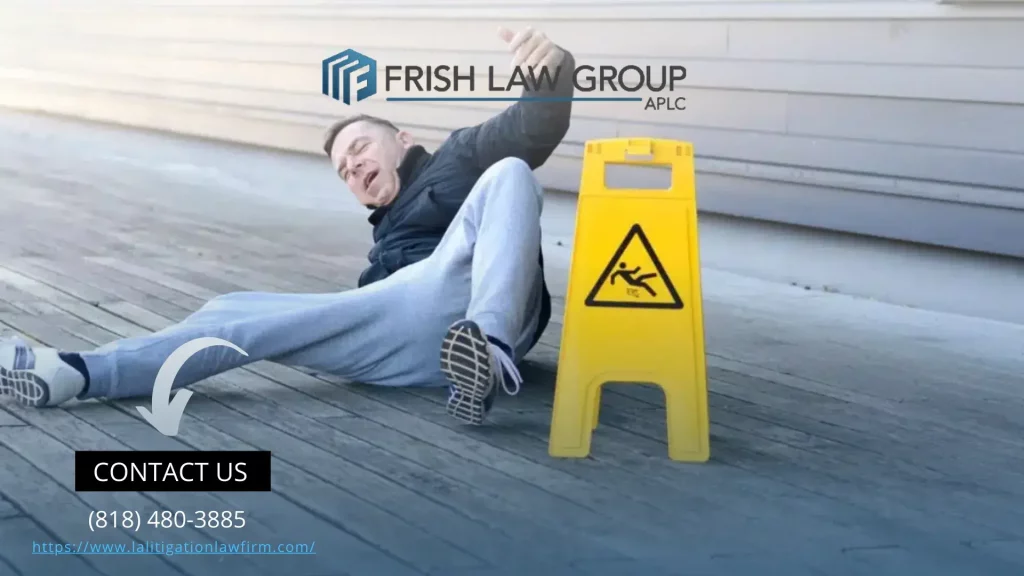Slip and fall accidents can lead to serious injuries and costly medical bills, making it essential to determine who is legally responsible. If a property owner’s negligence caused the accident, the victim may have the right to seek compensation. However, proving liability in a slip and fall case requires gathering the right evidence, understanding legal principles, and often working with an experienced Slip and Fall Attorney.
This guide will walk you through everything you need to know about proving liability in a slip and fall case, including evidence collection, legal defenses, and the role of an attorney in building a strong claim.
Understanding Liability in Slip and Fall Accidents
What Constitutes Negligence in a Slip and Fall Case?
For a property owner to be held responsible in a slip and fall case, the injured party must prove that negligence played a role. Negligence means that the property owner failed to maintain a safe environment, leading to an avoidable hazard.
The legal concept of premises liability holds that property owners must exercise reasonable care in keeping their premises safe. This applies to business owners, landlords, and even private homeowners in certain cases.
Key Elements Required to Prove Liability
To successfully establish liability, a slip and fall victim must prove:
Duty of Care – The property owner had a legal responsibility to maintain safe conditions.
Breach of Duty – The owner failed to address a hazard that they knew or should have known about.
Causation – The hazardous condition directly caused the accident and injuries.
Damages – The victim suffered injuries resulting in medical expenses, lost wages, or pain and suffering.
If these four elements are met, the injured party may have a strong premises liability claim.
Types of Evidence to Prove Liability in a Slip and Fall Case
Physical Evidence: Capturing Unsafe Conditions
The strongest evidence in a slip and fall case is visual proof of the hazardous condition that caused the fall. Victims or their attorneys should collect:
Photographs & videos of the accident scene.
Visible hazards, such as wet floors, uneven pavement, or broken steps.
Lack of safety measures, like missing warning signs or poor lighting.
Witness Testimonies & Security Footage
Eyewitness accounts and video footage can corroborate the victim’s claim, proving that the hazardous condition existed before the fall.
Eyewitness statements can confirm unsafe conditions.
Security footage may show the hazard being present for an extended period, indicating negligence.
Maintenance & Incident Reports
Past complaints, maintenance records, and previous incident reports can serve as critical evidence in proving that the property owner knew about the danger but failed to act.
Previous complaints about similar hazards.
Inspection logs showing delayed or ignored repairs.
History of similar slip and fall accidents on the property.
A Slip and Fall Attorney will work to gather and analyze this evidence to strengthen the case.
How a Slip and Fall Attorney Helps Establish Fault
Investigating the Case & Gathering Key Evidence
A skilled attorney will launch an independent investigation, collecting:
Property records to determine ownership and maintenance responsibility.
Witness testimonies to establish dangerous conditions.
Medical records linking the injuries to the fall.
Consulting Experts to Strengthen the Case
Attorneys often bring in expert witnesses to validate claims.
Safety inspectors assess whether the property violated building codes.
Medical experts confirm the severity of injuries and treatment costs.
Negotiating with Insurance Companies
Many premises liability cases are settled outside of court. A lawyer will:
Negotiate a fair settlement that includes all damages.
Challenge lowball offers from insurance companies.
Represent the victim in court if a fair settlement isn’t reached.
A qualified slip and fall attorney ensures the best possible outcome for the injured party.
Common Defenses Used by Property Owners in Slip and Fall Cases
The Property Owner Was Unaware of the Hazard
A common defense is that the property owner had no knowledge of the dangerous condition. However, courts consider:
Whether the hazard existed long enough for a reasonable person to have addressed it.
Whether routine inspections could have prevented the hazard.
The Victim Was Partially at Fault
Under comparative negligence laws, a victim’s own actions may impact their ability to recover compensation.
If the victim ignored warning signs, their claim could be reduced.
In some states, if the victim is more than 50% at fault, they may receive no compensation.
The Hazard Was Temporary or Unavoidable
Property owners might argue that the hazard just appeared and could not have been reasonably addressed in time.
A Slip and Fall Attorney will counter these defenses using evidence, expert testimony, and case law.
Steps to Take After a Slip and Fall Accident
Immediate Actions to Strengthen Your Claim
* Seek medical attention and keep records of your injuries.
* Take photographs & videos of the accident scene.
* Obtain witness contact information.
* Report the accident to the property owner or manager.
Consulting a Slip and Fall Attorney
Hiring an attorney as soon as possible ensures:
A proper legal strategy from the beginning.
Evidence is secured before it is lost or destroyed.
The case is filed within the statute of limitations.
Conclusion & Legal Assistance
Proving liability in a slip and fall case requires a strong legal strategy, compelling evidence, and an understanding of premises liability laws. A skilled Slip and Fall Attorney will:
✔ Gather crucial evidence to prove negligence.
✔ Consult expert witnesses to strengthen claims.
✔ Negotiate with insurance companies to ensure fair compensation.
✔ Take the case to trial if necessary to seek justice.
🚀 If you or a loved one has been injured in a slip and fall accident, contact our experienced attorney today to explore your legal options.
Read More:
Proving Liability: How a Slip and Fall Attorney Builds a Strong Case

